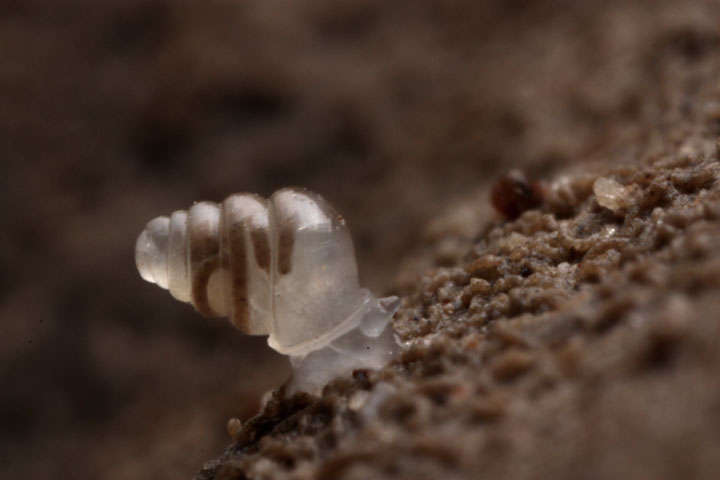WATCH: Take a look at some of the new and fascinating species discovered in 2014

TORONTO – There will be no award for the skeleton shrimp or the Tinkerbell fairyfly to display on their walls, but they are the proud winners of the top 10 newly discovered species discovered of 2014.
The State University of New York’s College of Environmental Science and Forestry created the list eight years ago in an effort to draw more attention to the taxonomy – the study of biological classification.
READ MORE: Snake species ‘lost’ for nearly 8 decades rediscovered on remote island
Included in the list is the skeleton shrimp (Liropus minusculus) which was discovered in a cave on Santa Catalina, Calif. This distant relative of the delicious edible crustacean has a transluscent appearance that makes it look like, well, a skeleton.
“I actually think it’s beautiful in a bizarre way,” Clinton Wheeler, president of SUNY College of Environmental Science, told Global News. Wheeler is also the director of the International Institute of Species Exploration.
Then there’s the olinguito, a cross between a cat and a wide-eyed teddy bear. This cute carnivore was discovered in cloud forests of the Andes mountains in Columbia and Ecuador.
There’s also Tinkerbell. Okay, it’s not the Disney fairy we know so well, but rather Tinkerbella nana. This fairy is part of the parasitoid wasp family Mymaridae , which has the more common name of fairyflies. Discovered in Costa Rica, this teeny fairyfly measures just 250 micrometres and is one of the smallest known insects.
Going from the smallest to the largest, the giant dragon tree, Dracaena kaweesakii, measures a whopping 12 metres high. This seemingly hard-to-miss tree was discovered in Thailand and may also be found in Burma. The tree grows on limestone, which is used to make concrete. Due to this, the species is considered endangered.
“It’s hard to believe we missed it,” Wheeler said.
Another interesting discovery was that of Tersicoccus phoenicis. Amazingly, this microbe was discovered in two different locations more than 4,000 kms apart. The concern there is that it was discovered in clean rooms where spacecraft are constructed. This poses the threat of Earthly contamination on other planets. But at the same time, Wheeler said, it helps scientists gain a better idea of where to look when searching for life on other planets.
“I always think of Jeff Goldlbum’s character in Jurassic Park, who said ‘Life finds a way,’ and it sure seems to,” Wheeler said.
The complete list:
- Olinguito Bassaricyon neblina , Location: Ecuador
- Kaweesak’s Dragon Tree, Dracaena kaweesakii, Location: Thailand
- ANDRILL Anemone, Edwardsiella andrillae , Location: Antarctica
- Skeleton Shrimp, Liropus minusculus, Location: California, U.S.A.
- Orange Penicillium, Penicillium vanoranjei , Location: Tunisia
- Leaf-tailed Gecko, Saltuarius eximius , Location: Australia
- Amoeboid Protist, Spiculosiphon oceana, Location: Mediterranean Sea
- Clean Room Microbes, Tersicoccus phoenicis, Location: Florida, U.S.A., and French Guiana
- Tinkerbell Fairyfly, Tinkerbella nana, Location: Costa Rica
- Domed Land Snail, Zospeum tholussum, Location: Croatia
The selection is made from the more than 18,000 new species discovered annually. The list is then narrowed for a selection committee, and then down to about 40 and then finally to the top 10.
READ MORE: Toronto Zoo reproductive program helps protect endangered species
Wheeler hopes the list helps draw attention to not only the discovery of species around the globe, but also to the study of taxonomy.
“We just don’t have the number of people doing this kind of work like we used to,” Wheeler said. And that, he believes, is part of the reason there remains an estimated 40 million species out there we’ve yet to discover.
“And if we don’t get them soon, they’re going to be gone,” he said.
“It’s easy to think about life as just a thick layer draped over the Earth, but in reality…the biosphere is like four miles thick, which is amazing to me.”
Wheeler said it’s hard for him to pick his favourite this year. But a single-celled organism about four- to five-centimetres high is up there. This one-celled organism is huge in its class of creatures. Not only that, but it gathers up sponge fragments and constructs a shell out of it, extending arm-like extrusions outside the shell in order to feed.
“As a multi-cellular animal, I am humbled that a single cell can do all that. It’s like, what do I need all these other millions of cells for?”





Comments